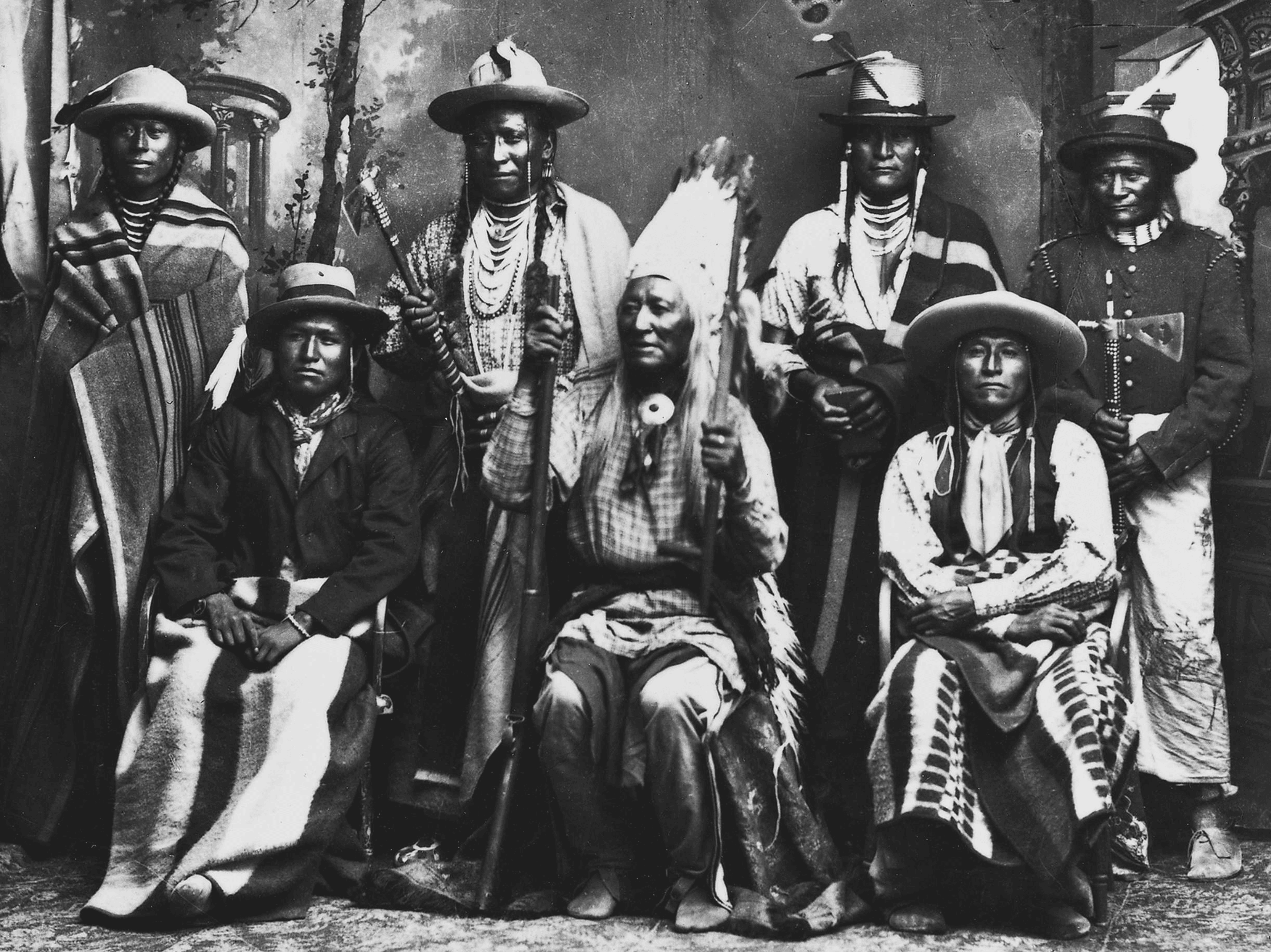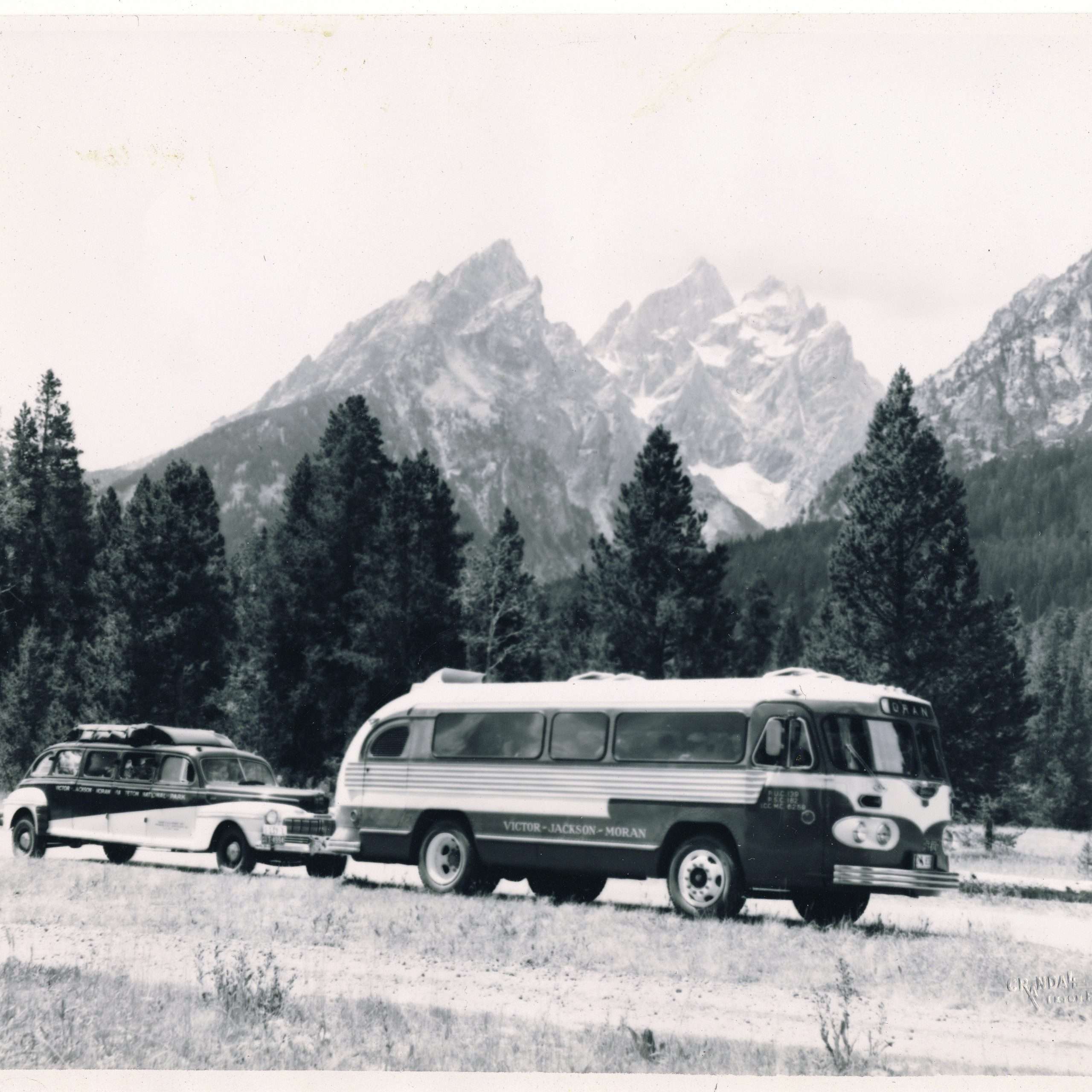The “Targhee” Enigma

A national forest, a golf course, a ski area, a breed of sheep and a type of obsidian appear to be named after him. Numerous businesses, such as a tree moving company, a snowmobile rental outfit, an amusement store and an environmental-consulting firm, also bear his name. But they may not be spelling it correctly. While this Native American chief signed a simple “X” on treaties with white men, they spelled it phonetically in English as Chief Taghee, not Targhee.
So who was this mystery chief of southeastern Idaho? Was he deserving of having a national forest bear his name, an honor often accorded to presidents and other prominent historical figures? An were the national forest and the ski area, a month others, really named for him? The Caribou-Targhee National Forest supplies historical information giving two accounts of the forest’s namesake, both involving Indian chiefs.
Of the two versions, the least credible states the forest was named for a Native American warrior named Tygee who died in a skirmish between Chief Joseph’s band and General Howard’s troops near Henry’s Lake. Histories of the Bannock tribe fail to mention this incident or any Tygee dying under these circumstances. The other Forest Service story appears more credible because it honors one of three historically verifiable chiefs—but no one’s certain which one rightfully deserves the limelight.
The confusion over the “Targhee” name extends beyond the Forest Service. The Idaho Historical Society admits to potential errors in their documents concerning the three Bannock Indian chiefs who lived in the late 19th century and whose names were spelled interchangeable as Tai-hi, Taghee, or Tygee, (occasionally Tai-hi, Targee, Tagi and Ti-Hee). In that era, accurate written documentation wasn’t a priority for Native American peoples, explains Clyde M. Hall, a Northern Plains Indian historian and member of the Shoshone Bannock Tribe. “Indian people in those days relied on spoken language,” he says. “Even today they’re still very verbally oriented.”
It is logical—but still speculative—to conclude the younger chiefs bore names paying homage to the first chief Taghee, who was a wise leader. Lost in time is the person who suggested the name for the national forest in 1908—and his or her reasoning for choosing the “Targhee” who inspired it.
If history is fair, the honor should reside with the original Chief Taghee, who kept his people peaceful in the face of trying circumstances. The two chiefs who followed him, and who are generally identified in English as Tyhee, were important leaders, but they played less significant roles in leading their people and in dealing with the federal government.
Also supporting the notion that most current usage of the name Targhee descends from the original chief is Lalia Boone’s book, Idaho Place Names: A Geographical Dictionary, which says Targhee Pass, Targhee Peak and Targhee Creek in Fremont County were named after a “notorious” Bannock warrior chief who died in an 1871-72 battle with the Crows. While the first Chief Taghee wasn’t a “notorious warrior” and didn’t perish in battle, he was the only chief Taghee to die during those years.
Part of the confusion surrounding the stories of these men arises from the fact that Taghee’s son, also named Taghee, was too young to succeed his father when he died in 1871. The tribe split into two groups when two men vied to become chief. When the leader of the larger of the two groups died a few years after the split, a sub-chief named Tyhee took control, remaining chief until 1912. Upon his death, the junior Taghee was chosen as chief, but by then he preferred to e called Pat Tyhee, according to Brigham D. Madsen, professor emeritus of history at the University of Utah.
Most of the written history about the first Chief Taghee comes from the research of Madsen, who spend much of his career correlating the correspondence of early white settlers, early newspaper accounts, military records and journals of soldiers and civilians. His work (and that of others) reveals the profile of a strong-willed, patient and intelligent leader trusted by his own people, and whom the United States government could trust to keep agreements. More importantly, Taghee was a peacekeeper. Another leader confronting the challenges Taghee faced, as his people’s world disintegrated with the advance of white settlers, might have chosen to continue the Bannocks’ proud but devastating warrior tradition.
The 1860s, when Taghee rose to power, were the years of great tension and distrust between long-time Indian residents of present-day southern Idaho and the growing numbers of white settlers seeking new homes and opportunities. The Shoshone and Bannock peoples, friendly neighbors, shared a home range covering much of southern Idaho, northern Utah, western Wyoming and northeastern Nevada. They had built a successful nomadic culture requiring large tracts of land.
When the Bannocks’ head chief, Tasokwauberaht, died in 1865, sub-chief Taghee assumed leadership. For several generations mysterious new diseases had caused untold grief and had greatly reduced the number of Bannocks as well as the neighboring Shoshone, Ute, Paiute and Nez Percé tribes. For years Taghee’s people had suffered the inexorable advance of the white pioneers and the toll of death, destruction and displacement this advance brought with it. Now the whites were settling on the lands to the south near the Great Salt Lake and spreading northward toward his people’s land. Other whites to the north were digging deeply into the ground searching for rocks they valued highly.
Across the Bannock territory, degrading traditional pastures in the process, other groups of whites were traveling westward every year on what the whites called the Oregon and California trails. Army patrols in the region commonly reported seeing more than 100 wagons in a single day, often accompanied by large herds of livestock. According to Frank Ross Peterson in Idaho, A Bicentennial History, one officer reported a wagon train with at least 7,000 head of livestock. This heavy traffic destroyed ever-wider swaths of Indian land as each successive wagon train moved farther to either side of the route to find adequate grazing for the stock.
Early settlers reported that the Bannocks were more aggressive and warlike than many of their neighbors, resisting advances by white people into their territory. The Shoshones were reported to be generally more friendly, but by the early 1860s even the Shoshones were attacking the white settlers because they could no longer endure the hardships the white encroachment placed upon them.
An incident in the winter of 1863 proved a pivotal moment for the Bannocks and a disaster for the Shoshones. In response to the increased raids by the Indians, the U.S. Army sent a force led by Colonel Patrick Connor to punish them. The result was the Bear River Massacre. Near what is now Preston, Idaho, the Army attacked a camp of Shoshones, killing more Native Americans than any other battle in U.S. history. According to professor Carlos Schwantes of the University of Idaho, author of In Mountain Shadows, a History of Idaho, Utah citizens who visited the battle field the next day found 368 dead Indians, including 90 women and children. No Bannocks were in the camp at the time of the massacre, but Taghee’s pregnant sister may have been there the day before. Because they were out hunting buffalo, the Bannocks avoided encountering Connor and his soldiers, but they undoubtedly recognized the extreme danger they faced if the army took action against them.
Thus Taghee and other chiefs had to decide the fate of their friends and family. Proud and brave, his people probably never numbered more than 1,000, according to most historical estimates, Undoubtedly some in the tribe looked forward to war. But, perhaps with the Bear River Massacre in his memory, Chief Taghee chose a new path of peace toward the settlers. He reasoned that negotiating for a permanent peaceful homeland was better than the consequences of war against a foe that always, ultimately, triumphed. Even the Indian agent at the time, John Bursche, recognized the Native American’s plight, saying that the scarcity of game and the settlement of the most fertile land forced the native peoples to take action, according to Madsen in The Shoshoni Frontier and the Bear River Massacre. “It is not expected that wild and warlike people will tamely submit to the occupation of their country by another race, and to starvation as a consequence there of,” Bursche wrote.
According to The Gale Encyclopedia of Native American Tribes, Taghee first appears in the Anglo history of the West as a sub-chief accompanying Tasokwauberaht to the signing of the 1863 Soda Springs Treaty. Under this agreement the Bannocks promised not to molest travelers crossing their land, in exchange for money and goods compensating them for the damages done to their pastures. The treaty also acknowledged that the Bannock lands extended from the Wind River Mountains in the east to the Humboldt River and Shoshone Falls in the west.
Soon after this first agreement, Taghee became chief and discovered the white men were not upholding their obligations. Supplies promised to the Bannocks didn’t materialize and Indians still dodged white scalp hunters, who were receiving from $25 to $100 for an Indian scalp, or a “redskin,” according to Madsen in The Bannock of Idaho.
In the summer of 1864 the Bannocks traveled to Fort Bridger to receive the supplies promised in the Soda Springs Treaty and found that some of the goods had burned en route and others were delayed—so much so that the Bannocks had to leave for their fall buffalo hunt before the supplies arrived. In 1865 the supplies also arrived late. Taghee must have felt considerable pressure to break the Soda Springs Treaty since the U.S. government so blatantly disregarded the Bannock’s welfare. Yet Taghee persevered and kept his people in line.
In 1866 the Bannocks again appeared at Fort Bridger, this time in the company of their friends, the Eastern Shoshones. To their dismay, the Shoshones were given $10,000 in supplies, but they would not share with the Bannocks. Taghee made his tribe’s displeasure known, and finally, agent Luther Mann used his own money to buy enough supplies for their immediate needs and tried to pressure his superiors for better treatment of the tribe.
Photo Caption page 71: Chief Pat Tyhee eventually succeeded his father, Chief Taghee, as leader of the Bannock people several decades after the latter’s death in 1871. Like other Native Americans, the Bannocks, who numbered about 1,000, commemorated events and leaders with oral histories, not written records. Few had reason to read or write English. Because of this cultural difference, government documents are littered with various phonetic spellings of the Taghee name, including Tyhee, Tygee, Tai-hi, Targee, Tagi and Ti-Hee. Special thanks to Clara Skeen, Donna Conley and Paul LaRose, descendants of Taghee, for resources for this article.
In August 1867 a frustrated Taghee met with Idaho governor D.W. Ballard, according to Madsen in the Bannock of Idaho. “The white people have come into my country, and have not asked my consent. Why is this?” Taghee asked. “And why have no persons talked to me before? I have never known what the white people wanted me to do. I have never killed white people who were passing into my country. What you say to m I shall never forget. All Bannock Indians will obey me.
With reluctance Taghee said he and his people would like to move to a reservation, but he wanted to continue the migratory hunts until the buffalo hunting became too poor to be worthwhile. He also wanted the right to continue digging roots on the Camas Prairie. He didn’t want any whites on the reservation, except for government workers, and he wanted a reservation big enough for all his people. In the end an agreement was reached that provided for the Bannocks to move onto the Fort Hall Reservation in June 1868. But this agreement with Ballard wasn’t put into effect.
White settlers also pressured the government to treat the Bannocks more fairly, according to Madsen. M.A. Carter of Soda Springs wrote, “They [the Bannocks] have been and are now on the most friendly terms with the whites, and have manifested this disposition notwithstanding there were many circumstances which would have aggravated Indians of less kindly feeling to open hostility …. At a treaty over two years ago between Gen’l Connor and the Bannock Indians many obligations were undertaken, which have never in any degree been carried into effect leaving the Indians much cause to be dissatisfied.”
Perhaps as a result of the growing concern, General C.C. augur led a delegation to meet with Taghee and Shoshone Chief Washakie early in the summer of 1868. The result was the Treaty of Fort Bridger, agreeing that when the Bannocks desired a reservation, or when the U.S. president thought it would be best for them to be put on a reservation, one would be created to include “reasonable” parts of the Portneuf and Camas prairies by Big Wood River, now the site of Fairfield, Idaho. Among other things, the Bannocks would receive yearly annuity goods for 30 years, delivered by September 1 each year. The Bannocks were also given $15,000 in presents to make up for the years when they had not received the supplies they had been promised under previous agreements.
With the Fort Bridger treaty, it seemed Taghee’s years of patience had finally earned reward. Agent Mann said Chief Taghee was a “most reliable and excellent Indian, and to his prudent counsels the moderation and patient endurance of broken faith by this tribe are due.”
The following summer Taghee told agent Mann he wanted to move his people to the Fort Hall Reservation a request confirmed by President Grant in July. However, due to bureaucratic errors, the promised annual supplies were often late, insufficient or worse—they were delivered yearly to the Shoshone’s Wind River Reservation, which meant a long, mountainous trip for the Bannocks. Often the supplies at Wind River were so short the Bannocks had to resume hunting to ensure they would have enough food to survive. In addition, according to Madsen, white settlers began herding pigs on the valuable Camas Prairie, arguing that the Fort Bridger treaty allowed Native Americans access to the “Kansas” prairie, a clerical error.
By the summer of 1870, Taghee had had enough and demanded the treaty terms be honored—or he would wage war. His threat brought an immediate partial distribution of relief supplies. This was Taghee’s last action on behalf of his people. The following summer, when the Bannocks returned from their buffalo hunt, it was learned Taghee had died in the winter of 1870-71.
No indisputable images or written descriptions exist regarding Taghee’s appearance. Historians have only the record of his efforts to secure the survival of his people and his remarkable goodwill toward white settlers. Likewise, no records indicate how much time Taghee spent in Teton Valley, but through one of those remarkable twists of fate, as reported in Beaver Dick, the Honor & the Heartbreak by Edith M. Schultz Thompson and William Leigh Thompson, the first white man to live on the upper Teton River Richard (Beaver Dick) Leigh, acted as midwife for Taghee’s sister. He found her alone, afraid and in labor not far from the Bear Creek Massacre. (Neither was involved in the battle, but Beaver Dick remembered it as the time he most feared for his life.) He delivered a girl, Susan Tadpole, who 32 years later became his second wife and shared his life along the Teton River.




